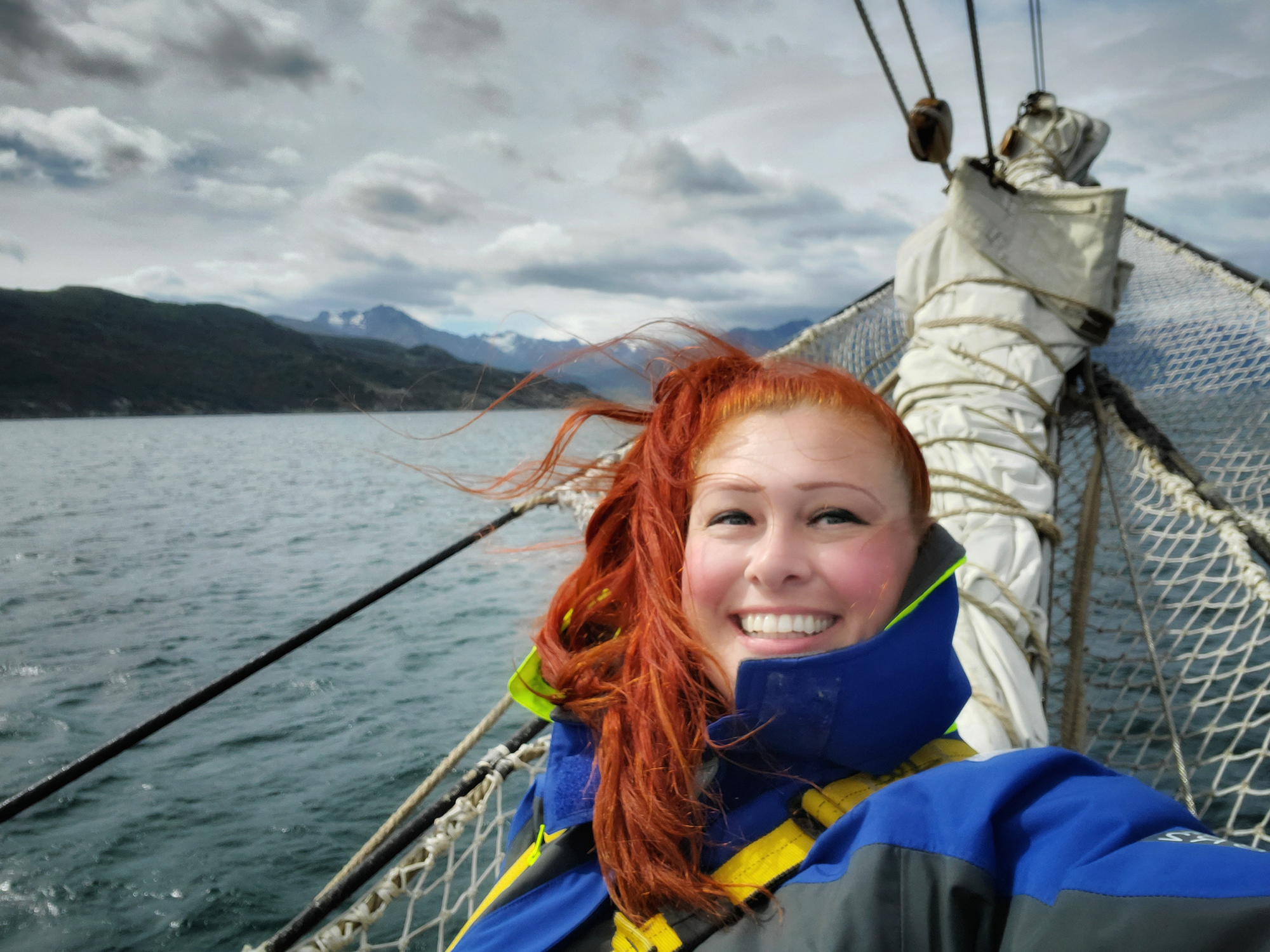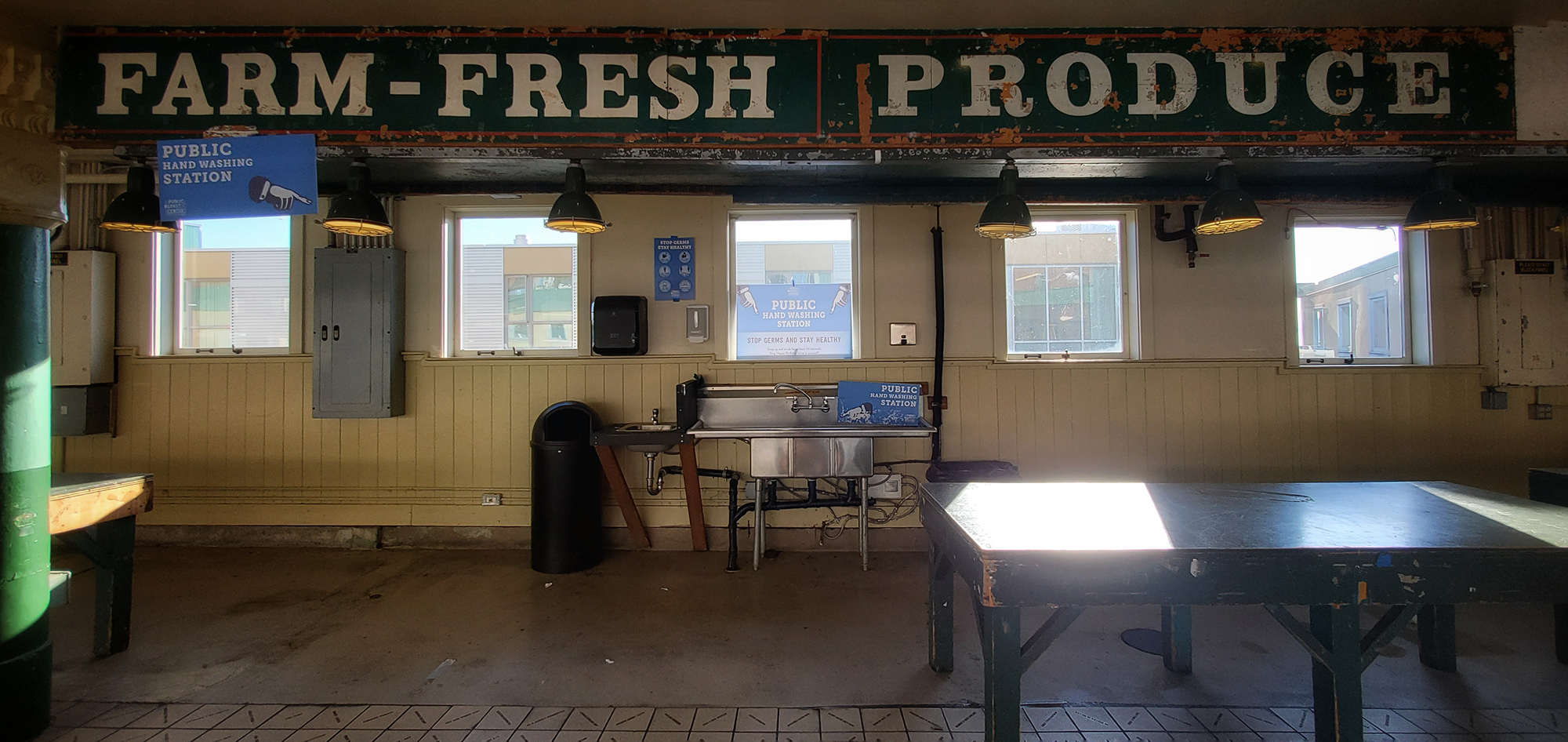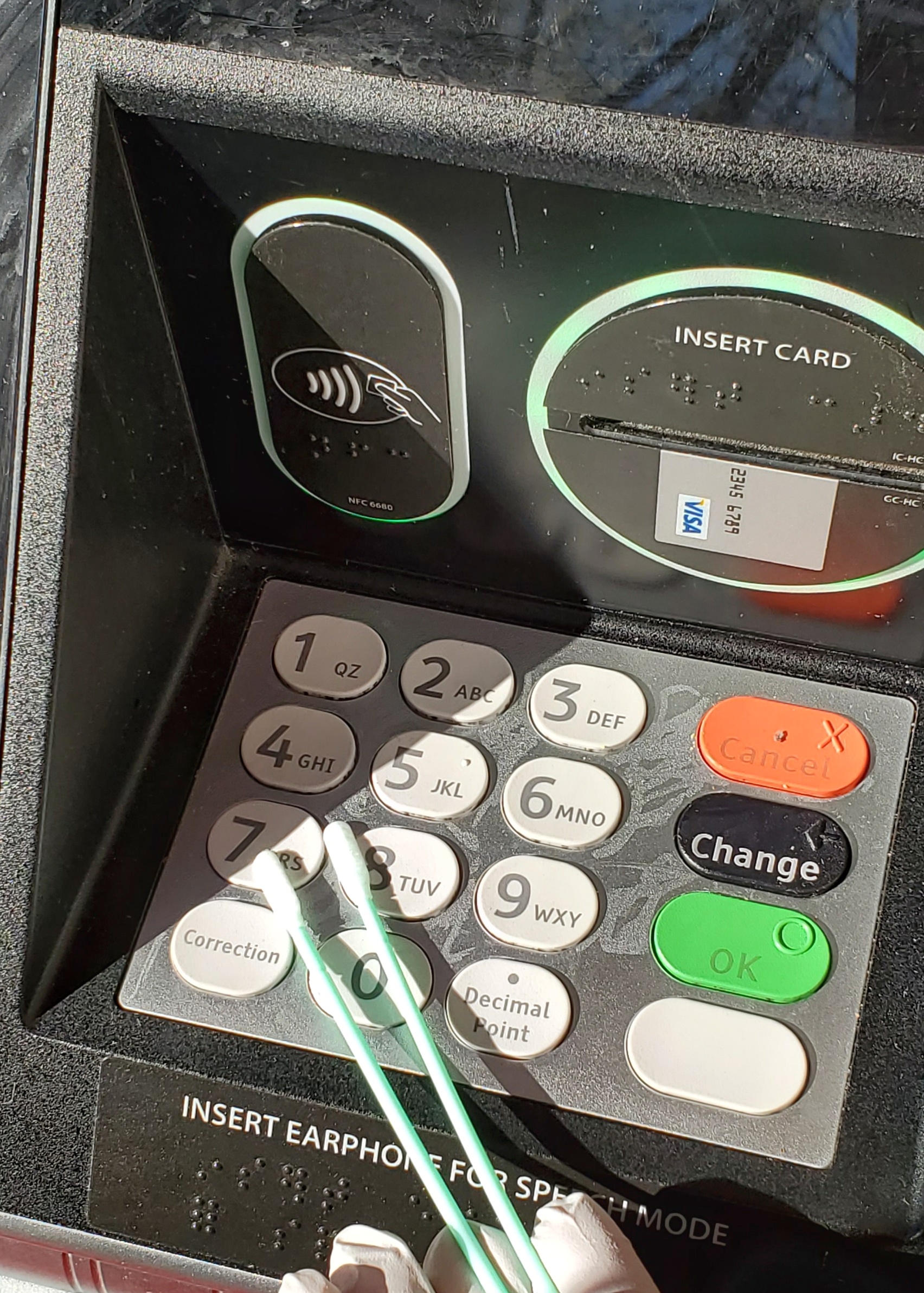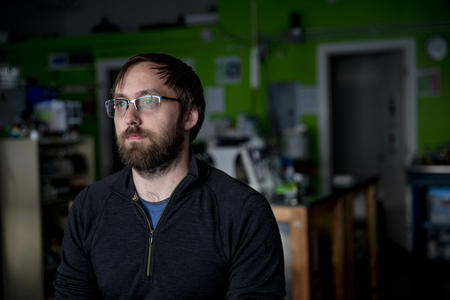Now inadvertently trapped with her parents at their home in Gig Harbor since March 6, Hastings is finding ways to put her expertise in field work, immunology and virology to work in Seattle in the name of a public health crisis. This time, instead of sampling for traces of microbes in remote locations, she’s helping to detect the prevalence of the novel coronavirus on surfaces of the urban cityscape.
Off the grid and into a pandemic
Hastings had been offline with no contact to the outside world since Feb. 1 as a research scientist on a project swabbing the highest-trafficked parts of Antarctica for evidence of human microflora through her xO.Lab initiative in collaboration with colleagues at Cornell University's Weill Cornell Medical College. Before that, she spent two weeks commanding an all-female mock space mission on the side of Hawaii’s Mauna Loa volcano.
As soon as her team pulled its vessel into port in Ushuaia, Argentina, on Feb. 23, emails and social media notes from friends and family started pouring in with rumors about “something” that was emerging out of China. (The vessel’s permanent crew failed to find a willing port before sailing back to the Netherlands.)
“As someone who travels quite frequently, I imagined this would quickly become a global issue — that to me was readily apparent,” she said. “What I did not yet foresee was just how transmissible this virus is, and how quickly it would spread.”
Hastings reached New York, where she is based, on Feb. 27, just in time for a week of meetings with Cornell's MetaSub International Consortium — an urban microbiome mapping project that swabs transportation hubs around the world for microscopic life. The aim is to create a profile of the life around us and better understand how we interact with it.

“I am intrigued with and drawn to a systemic way of understanding our environment, viruses [and their evolution] in particular,” she says of her two-year involvement with the project. “For one, we are outnumbered many times over by the microbial life on this planet. It's some of the most ancient, diverse and extraordinary life in its different manifestations … and I appreciate that there's so little that we understand about them so far.”
While the consortium has been taking censuses of microscopic life for three years, Hastings came back to the lab just as the first coronavirus cases popped up in Seattle. Her adviser and MetaSub principal investigator Dr. Christopher Mason says he and his colleagues realized in January that they had the infrastructure in place to start swabbing for evidence of the coronavirus on high-touch surfaces around the world, and they decided to pivot.
“I was dropping off the equipment I had to take with me to Antarctica, and suddenly, literally, like a day or two later, it was 'Hey, let's take this out into the New York City subway and see if we can detect the presence of viral RNA in New York transport,’ ” says Hastings. She grabbed an air sampler she had just used in Antarctica and, with a few colleagues, took the subway to Times Square to do the very first rounds of coronavirus-focused surface swabs and air filtration.
The swabbing process is a simple, leave-no-trace endeavor. Scientists swab high-touch surfaces — turnstiles, ticket machines, guard rails — with a sterile swab, then put the swab in a buffer that sterilizes and inactivates any DNA and RNA it might have picked up, making it safe for storage and transportation. To evaluate things over time, the scientists swab surfaces every other day to see if viral RNA is accumulating. Most importantly, they’re looking for the presence of the virus. If they do see evidence of it, they can then advise people in that location on how to disinfect properly and better respond to the virus through personal actions and public health or business-specific efforts, Hastings says.
Clockwise from left, Science Officer Dr. Adriana Błachowicz, Vice Commander Erin Bonilla, Communications Officer Dr. Sian Proctor and Habitat Operations Officer US Air Force 2nd Lt. Makiah Eustice wave at J.J. Hastings, who is inside the HI-SEAS habitat, during an experiment to simulate life on Mars in Hawaii on January 2020. During the two-week-long mission, Hastings and her colleagues researched the microbial flora present in the habitat, as well as those in the lava tubes outside of the habitat. (J.J. Hastings)
In the weeks since the project started, a wave of information has emerged about how long the coronavirus can last in air and on different surfaces. The Centers for Disease Control and Prevention notes that while human-to-human transmission of the virus is most common, there is a small chance of picking up the virus from your environment if you touch the same surfaces (known as fomites) where infected people may have left behind traces of the virus.
“I don't think we can rule out a fomite route of exposure,” says Dr. Scott Meschke, an environmental virologist with the University of Washington. “This virus is new enough that I don't think we fully understand the problem yet. And so I think there is value in trying to understand how the virus gets from one person to another. … If you're finding it on a surface, then you've got more reason to investigate further.”
Swabbing Seattle
As Hastings’ colleagues around the world started sampling, they shipped her enough material for “a few different time points’ worth” of swabs.
“It was like, 'OK, I'll see you guys in a little bit; I'm heading to Seattle to go and see family,' and then … yeah,” Hastings says. “Now that it's sort of indefinite, they sent some more [swabs].”
Hastings settled on swabbing three locations within Pike Place Market and the adjacent Victor Steinbrueck Park. “Security guards around Pike Place were very friendly and helpful in talking about where people were congregating [nearby] to help us best pick sites,” Hastings says.
Starting March 19, she swabbed twice a day, every other day, after work hours so she wouldn’t run into as many people. To get there and back, she took nearly empty Washington state ferries from Bremerton to the city, and her mom picked her up.

For help, Hastings recruited Seattleite Zach Mueller, whom she knows through her work with community biology labs. Swabbing the sites together took between an hour and an hour and a half. To ensure they had collected enough material, they swabbed surfaces for three minutes.
Hastings was conscious of not trying to conceal what she was doing, carrying her credentials and an explanatory letter from Cornell just in case. She was surprised to find that the skepticism quickly gave way to enthusiasm and support from onlookers, especially unhoused people.
“It was actually an amazing experience to go into the city during that period where there was definitely heightened precaution and anxiety,” she says. “I was expecting people to be rather suspicious, as we’ve seen in past MetaSub sampling, but instead once people engaged and asked me what we were doing, they were very positive. It was very heartening.”
For safety, Mueller and Hastings socially distanced and wore gloves and extra layers they could easily remove. (This was before the CDC recommended use of masks in areas of high traffic.) To protect themselves and their samples, they were conscientious about what they touched. That meant frequently washing already chapped hands, using individually wrapped swabs and sterilizing gloves by rinsing them in 70% isopropyl alcohol.
“Part of the cost of doing business I guess in science, to ask the important questions, is you really have to be willing to accept some risk,” she says.
But with both of Hastings’ parents in high-risk groups, she had to take extra precautions. Early on, they had near-daily discussions about protocols for many activities. “We’ve had to have frank and open and sometimes challenging conversations about how you balance whatever risk that's involved in doing your job with the people around you,” says Hastings. “But it's been really helpful I think, for them to get to know what I do on a very personal and direct level through witnessing the questions that I've had to ask in helping us think through how to better protect our family.”
“We had our own sort of decon[tamination] team that was built off of my experience working in infectious disease labs and modified it as best we could for when I would go in and out of the city,” she says.
Swabbing in a shutdown
While Hastings and Mueller were able to log some sampling expeditions, things became more difficult as local government limited access to parts of Seattle, including Pike Place Market.
The last time Mueller went to swab Pike Place, he discovered it was closed. Hastings tried to get in touch with market management about continuing sampling, but was unable to. Instead, they found publicly accessible ATMs, as colleagues overseas had, selecting machines along Pike Street and First Avenue to swab.
The team completed its first phase of swabbing on April 7, Hastings says, because they had a predetermined timeline for taking initial samples. (In retrospect, she thinks that was lucky: “It was right before we kind of reached peak [transmission in Seattle], so right when it would have been really risky to go out into the public.”) She and Mueller collected 94 samples total; as of May 25, they’re still waiting on their samples to be processed by colleagues in New York.

Swabbing has been on pause as Hastings watches for more parts of the state to advance to Phase 2 of Gov. Jay Inslee’s “Stay Home, Stay Healthy” order, in the hope that they can detect any changes to microbial flora as the city reopens.
They also want to see if their initial batch of swabs turns up quality samples, which will inform whether they adjust their methods for the next phase. The MetaSub project has a long history of mostly studying environmental DNA, and is now prioritizing how to collect and analyze viral RNA, which degrades faster in the environment and is harder to identify.
She’s also been reaching out to local and state government officials for support on the project, but has yet to hear back.
Hastings hopes to enlist the support of local and state government officials, and she hopes to recruit more people so they can collect hundreds to thousands of samples over more sites and for a longer period of time. “With only Zach and me, it's a big task for just the two of us,” she says. “I won't be in the greater Seattle area forever — I’ll be heading back to New York in the next few months — and I really want to do whatever capacity building I can here for anyone that wants to get involved.”
Mason, the MetaSub principal investigator, says the global research is ongoing and slated to continue through the summer. He says that global sampling has turned up positive identifications of the coronavirus in the environment, “although results are being all merged into one large paper on it.”
While she waits for her swabs to process, she’s been developing protocols with a few colleagues for more coronavirus research: wastewater treatment sampling, which researchers like UW’s Meschke say can be very useful in detecting viruses and outbreaks.
As the pandemic drags on, Hastings finds herself leaning on skills she has learned from living and working in close quarters for extended periods of time. Part of that involves coping with and accepting the unknown.
“This COVID era differs quite a bit from space explorations or other missions. We don't have a defined mission, other than to try and get back to some level of normalcy,” she says. “But at least I can recognize when I need a little bit of self-care … and recognize certain behaviors and effects that we see in crews in quarantine for a long period of time.”
And she’s looking for silver linings, no matter how bleak or interminable the situation may be.
“I have spent most of my adult life overseas on my own living away from my family,” she says. “So it’s been really meaningful to be able to spend some time especially with my nieces and nephew, as they're in a young period of their life — and to spend time with my family in close quarters, getting to know each other during this time a bit more deeply.”






